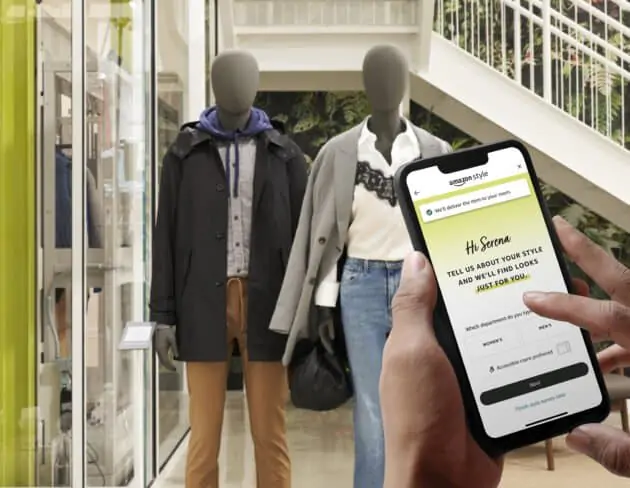After books (and music, e logistics, and foodstuffs, even hairdresser) Amazon's latest foray into retail is in fashion.
In fact, today Jeff Bezos' company launches "Amazon Style“, a store that combines the e-commerce giant's technological know-how with customers' long-standing desire to be able to touch and try things.
The first location will open in Glendale, California at a large shopping center in the area. It is yet another effort by Amazon to break into traditional retail, and take another slice of the market, this time in the fashion sector (clothing and footwear).

Fashion and Amazon, longstanding relationship
The technology giant has already been innovating in the fashion sector for years: the company has been researching both new business models and ways to try on clothes without wearing them (even from a distance). He also has his own clothing label, Amazon Essentials.
Even in the USA (source: research Wells Fargo) already surpassed Walmart as the # 1 clothing retailer last year. What will your new physical store look like now?
A leap forward (and into the void, for traditional brands)
Simoina Vasen, CEO of Amazon Style, said in a blog post that “Amazon Style combines the best of fashion shopping on Amazon (great prices, selection and convenience) with an all-new in-store shopping experience built to inspire.”
Needless to say, an experience based on Amazon technology, especially for the selection of clothes. Few shelves and piles of clothes, in fact: buyers looking for clothing, shoes and accessories directly use the Amazon Shopping app to scan the QR Codes and find out the details of each product.
When they are decided, with a simple click in the app users send the items to the fitting room or directly to the collection counter.

Hybrid up-selling and cross-selling
Once inside that "reinvented dressing room", the user can try on that dress to make sure of the size, but with a large display he can also try on a thousand variations of that dress with the certainty that it will fit him. Machine learning algorithms produce real-time recommendations to give customers the most personalized experience. It is also a way to upsell by capturing a customer in the physical location with digital dynamics.
New choices? New fashion quickly delivered to the dressing room. Fast delivery to the dressing room is also done with technologies and processes already tested in Amazon's logistics centers.
“Personal style used to be expensive and exclusive, but with Amazon Style's sophisticated technology we've made it easier than ever for customers to discover the perfect fashion for them,” Vasen writes in her post.
It goes without saying that the physical location will be able to benefit from all the possible synergies with the app (physical delivery or collection of returns). Sounds amazing, right? And now let's look at the employment implications.
Human employees? They serve like bread.
Working in a store means managing inventory and receipts, greeting customers, assisting them at checkout or checkout, assisting them with returns or exchanges after they've made purchases, unpacking items from boxes and off shelf displays. There will still be work for humans for a long time, at least here.
The escape from physical stores is not an absolute and irreversible consequence. Especially in the field of fashion, a tactile, emotional, personal component is necessary: as long as dressing and having a social aspect makes sense, people will make sense. The physical experience of evaluating a product is rewarding.
However, we must ask ourselves how many stores there will be in the near future. They will be physical (hybrid), of course, but they will no longer be as widespread as before and probably, as it is today for technology or cars, they will be in the hands of big players.


